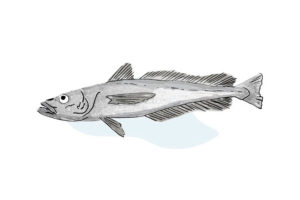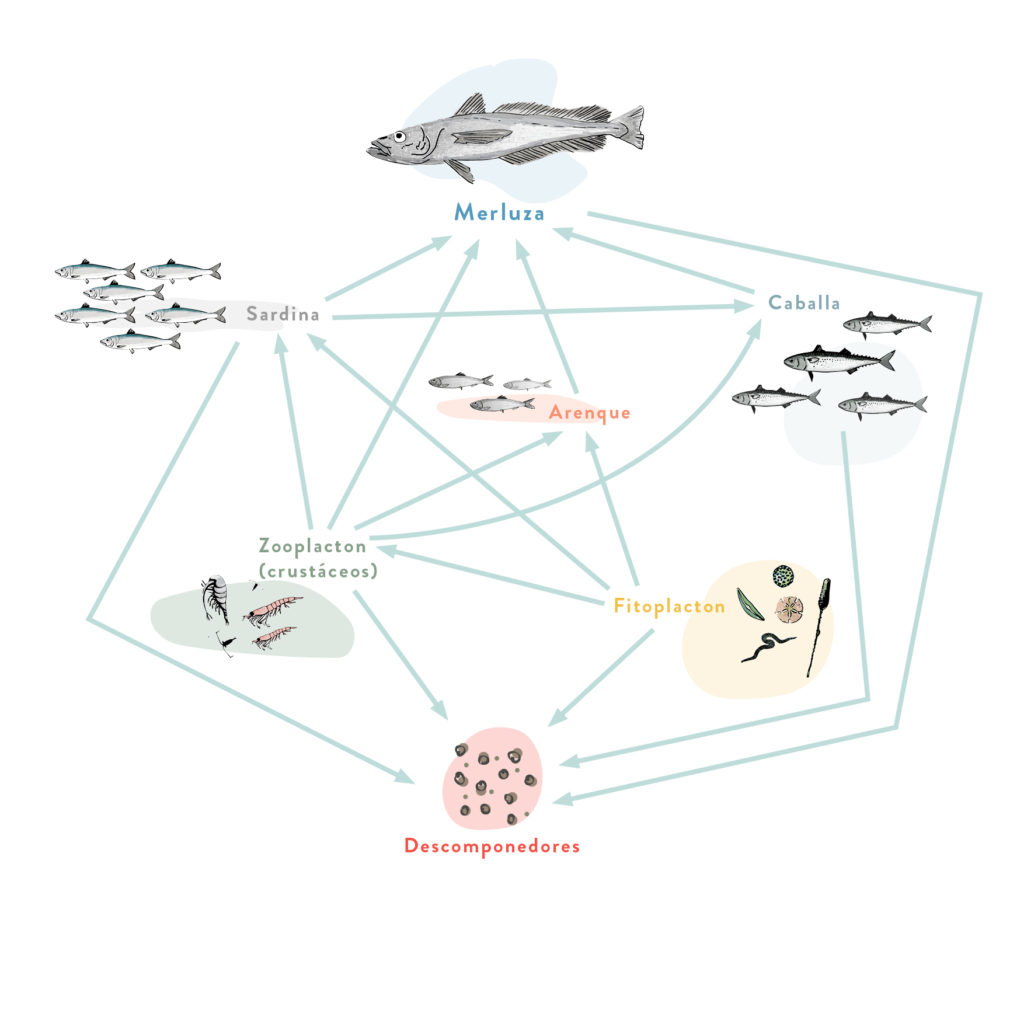OCÉANOS: FUENTE DE ALIMENTO

La Merluza
Es una especie que habita, entre 30 y 500 metros de profundidad. En invierno se encuentra en aguas más profundas y en verano se aproxima a la costa. Durante el día se mantiene cerca del fondo, y por la noche se acerca la superficie para alimentarse. Se alimenta de peces gregarios (sardinas, arenques, caballas, espadines, anchoas…) y de crustáceos. Es una de las especies con mayor importancia comercial. Se pesca en gran cantidad, unas 5000 toneladas en las costas mediterráneas de la península Ibérica.
Se captura principalmente con arte de arrastre, entre 50 y 500 metros, y con palangre, sobre los 250, aunque en ocasiones se llega hasta los 1000 metros con palangre de fondo.

